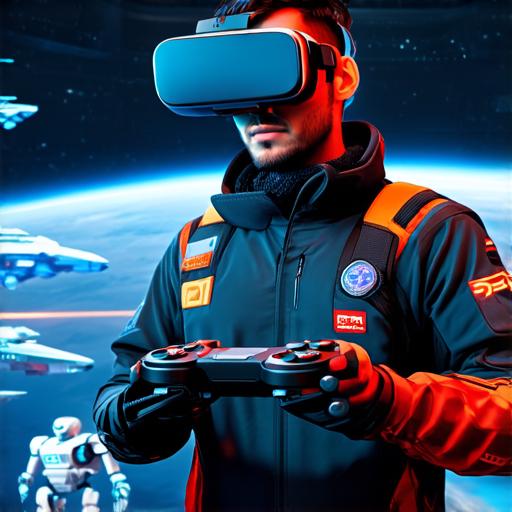
Unity is a powerful and popular game engine that allows developers to create immersive and interactive 3D games. With its easy-to-use interface, extensive support, and vast library of assets, it’s no wonder why Unity has become the go-to choice for indie and professional game developers alike.
Getting Started with Unity

Before diving into the world of 3D game development with Unity, it’s important to familiarize yourself with the basics of the engine. First and foremost, you will need a computer that meets the minimum system requirements for Unity.
These requirements include a dual-core CPU, 4GB of RAM, and a graphics card with at least 512MB of VRAM. Once you have ensured that your computer meets these requirements, you can download and install Unity from the official website.
Once you have installed Unity, you will need to create a new project. This involves selecting a template for your game and customizing it to suit your needs. Unity offers a variety of templates, including 2D, 3D, AR/VR, and multiplayer games.
Creating 3D Models and Scenes
Once you have set up your project, you can start building your game. The first step is to create 3D models for your game world and characters. Unity supports a variety of file formats for 3D models, including .obj, .fbx, and .dae.
You can either create your own 3D models using a 3D modeling software like Blender or import pre-made models from the Asset Store.
Once you have your 3D models, you can start creating scenes for your game. A scene is a collection of objects, lights, and cameras that make up a single viewport in your game. To create a new scene, simply right-click in the Hierarchy window and select “Create Empty”. You can then add your 3D models to the scene by dragging them from the Assets folder into the Hierarchy.
Once you have added your 3D models to the scene, you can start positioning and rotating them to create a desired layout. You can also use the Transform component to move, scale, and rotate objects in real-time as the game progresses. Additionally, you can add lighting to your scenes to create a more immersive atmosphere. Unity offers a variety of built-in lighting options, including point lights, spotlights, and directional lights.
Writing Code for Your Game
Now that you have created your 3D models and scenes, it’s time to start writing code for your game. Unity uses C as its primary programming language, although developers can also use JavaScript if they prefer.
To get started with coding in Unity, you will need to create a new script by right-clicking in the Project window and selecting “Create C Script”.
Once you have created your script, you can start writing code to control the behavior of your game objects. For example, you can create a script that allows players to move their character around the game world by using the arrow keys on their keyboard.
You can also create scripts that trigger events when certain conditions are met, such as when a player interacts with an object in the game world.
Debugging and Testing Your Game
As you develop your game, it’s important to thoroughly test and debug it to ensure that it works as intended. Unity offers a variety of tools for testing and debugging, including the built-in Debugger and the Console window.
You can also use third-party tools like Visual Studio and Xcode to debug your code.
In addition to testing your game in the development environment, you should also test it on various platforms to ensure that it works correctly on all devices. Unity supports a variety of platforms, including Windows, macOS, Linux, iOS, Android, and web browsers.
Publishing Your Game on Various Platforms
Once you have thoroughly tested and debugged your game, you can publish it on various platforms for players to enjoy. Unity offers a variety of publishing options, including submitting your game to the App Store and Google Play for mobile devices, or publishing it as a web-based game that can be played in any browser.
If you plan to submit your game to the App Store or Google Play, you will need to follow the guidelines set forth by Apple and Google. This includes creating an account, submitting your game for review, and following their specific submission requirements.
Case Study: Creating a 3D Puzzle Game with Unity
To illustrate how to create a 3D game with Unity, let’s take a look at the process of creating a 3D puzzle game. In this game, players will need to solve puzzles by moving objects around a virtual room to fit them into specific slots.
Step 1: Setting up the project
To create this game, we will start by setting up a new Unity project and importing some pre-made assets. We will use a template for a 3D puzzle game and add some basic lighting to create a realistic atmosphere.
Step 2: Creating the game world
Next, we will create the game world by adding walls, floors, and ceilings to the scene. We will also import some pre-made puzzle pieces that players can use to solve puzzles.
Step 3: Writing code for the game
We will then write code to control the behavior of the puzzle pieces. When a player picks up a piece, they can move it around the room by dragging and dropping it. When a player places a piece into a slot, we will check if it fits correctly and award points for completing the puzzle.
Step 4: Debugging and testing the game
We will thoroughly test the game to ensure that it works as intended and fix any bugs that we encounter. We will also test the game on various platforms to ensure that it works correctly on all devices.
Step 5: Publishing the game
Once we are satisfied with the game, we can publish it on various platforms for players to enjoy. We will submit our game to the App Store and Google Play for mobile devices, or publish it as a web-based game that can be played in any browser.
Summary
Unity is a powerful and popular game engine that allows developers to create immersive and interactive 3D games. With its easy-to-use interface, extensive support, and vast library of assets, it’s an ideal choice for game development. By following the steps outlined in this guide, you can create your own 3D game with Unity and share it with the world.

